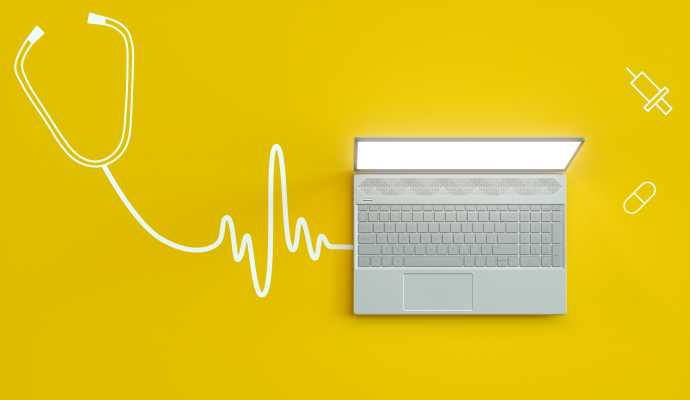73% of Healthcare Execs Say RPM Programs Deliver ROI
Most healthcare executives are seeing RPM programs deliver positive ROI and plan to increase or maintain their RPM budgets next year, survey results reveal.

Source: Getty Images
- Remote patient monitoring (RPM) programs are yielding a positive return on investment even though many of these programs were implemented less than two years ago, a new survey shows.
Commissioned by MD Revolution, Sage Growth Partners surveyed 141 healthcare executives in May 2023. Of the survey respondents, 40 percent worked at a health system, 19 percent at a physician practice, and 14 percent at a federally qualified health center (FQHC). Additionally, about 23 percent were CEOs, 19 percent were chief operating officers, and 11 percent were chief medical officers.
The survey shows that healthcare organizations primarily deployed RPM programs for chronic disease populations, including those with hypertension (26 percent), diabetes (25 percent), heart conditions (20 percent), chronic obstructive pulmonary disease (12 percent), mental health conditions (8 percent), and surgical recovery (5 percent).
About 76 percent of respondents said that RPM programs have positively impacted patient care, and 67 percent said they had a high impact on patient satisfaction. Similarly, 79 percent said that chronic care management (CCM) programs have helped enhance patient care, and 71 percent noted they had a beneficial impact on patient satisfaction.
Further, provider-vendor partnerships for RPM and CCM programs are proving fruitful, so much so that 85 percent of survey respondents said they are unlikely to switch partners.
Nearly half of respondents (44 percent) said they are implementing RPM programs to positively impact patient outcomes. Around 42 percent cited reducing unnecessary hospital readmissions, and 31 percent cited lowering the cost of care delivery as the main reasons for RPM adoption.
An overwhelming majority of survey respondents (94 percent) said that RPM programs have improved patient outcomes, while three-quarters (73 percent) said they have yielded a positive ROI.
About 63 percent of survey respondents have earned ROI by improving care plan compliance and engagement through RPM, and 58 percent said enhanced medication compliance linked to RPM led to financial returns.
Not only that, but survey respondents also indicated a positive ROI associated with CCM programs. Around 78 percent said that CCM’s ROI comes from additional revenue, with respondents saying they have experienced an approximately 29 percent reimbursement increase after the program was implemented.
Looking ahead, most healthcare executives plan to increase or maintain their budget for RPM and CCM programs.
The survey shows that 46 percent of respondents expect to increase their RPM budget in 2024, another 46 percent expect to maintain their current budget, and 7 percent expect to decrease their RPM budget next year.
Similarly, 50 percent expect to increase their CCM budget in the new year, 40 percent expect to maintain their current budget, and 9 percent expect to decrease their CCM budget in 2024.
In addition, EHR integration will be a crucial consideration for executives with plans to launch or scale RPM and CCM programs, the survey notes. Integrating RPM data with EHR systems helps healthcare organizations work toward key metrics, such as improving care quality (64 percent), enabling data-driven care decisions (62 percent), and enhancing compliance needs (54 percent).
Further, 74 percent of survey respondents said that not integrating RPM data with EHRs creates more manual work for administrative staff.
The survey comes as healthcare stakeholders work to determine the value of RPM amid rising adoption.
A study published last month examined the impact of RPM use on hypertension care and spending. Researchers compared outcomes data from 192 high-RPM practices, that is, practices where 25 percent or more hypertension patients received RPM, to data from 942 low-RPM control practices, that is, practices where less than 2.5 percent of hypertension patients received RPM.
They found that RPM was linked to improvements in several outcome measures, including hypertension medication fills and reductions in hypertension-related emergency department (ED) visits and hospitalizations. However, high-RPM practices’ net hypertension-related spending saw a relative increase of $274 per patient.
